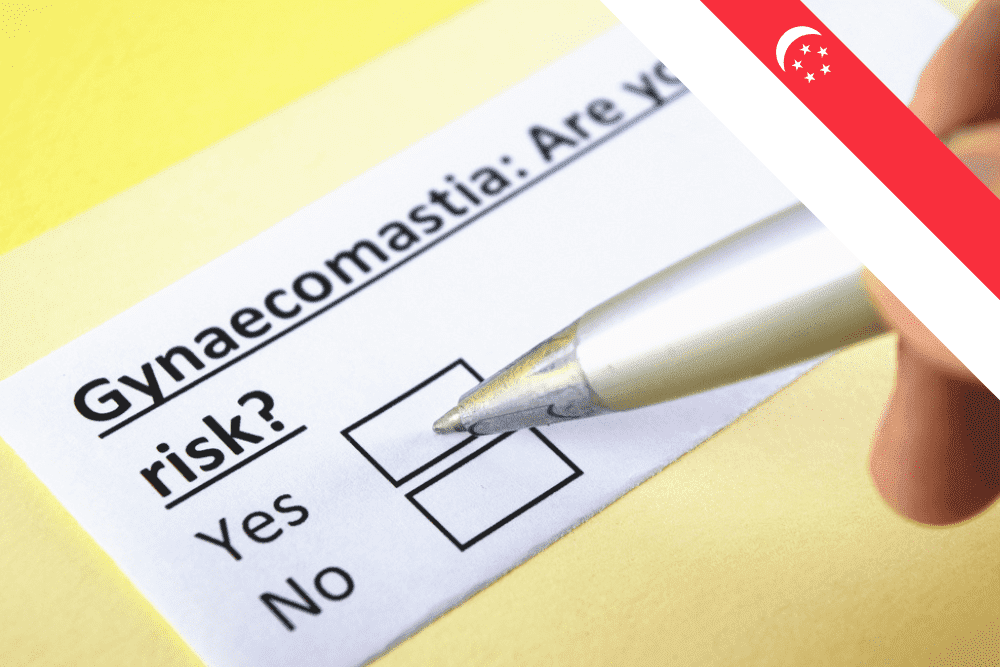Breast tissue enlargement affects many male teens due to hormonal changes. Experts reveal its prevalence, symptoms, and treatment options.
Gynaecomastia, the enlargement of breast tissue in boys and men, is a common condition affecting 50-60% of male adolescents. This condition, often a result of hormonal imbalances during puberty, typically resolves on its own. However, understanding its causes, symptoms, and treatments is essential for those affected.
Prevalence and Causes
Gynaecomastia affects approximately 17% of boys around the age of 13, according to Dr. Chin Xinyi, a senior endocrinologist at KK Women’s and Children’s Hospital (KKH). The condition impacts 50-60% of male adolescents, often without noticeable symptoms. It is primarily caused by hormonal changes during puberty, where fluctuations in testosterone and oestrogen levels lead to breast tissue enlargement.
Gynaecomastia also occurs in an estimated 60% to 90% of newborns, caused by oestrogen, the female hormone that babies receive from their mothers. 70% of men develop the condition from around the age of 60, as they produce less testosterone, the male hormone.
Symptoms and Diagnosis
In infants, gynaecomastia appears a few days after birth and usually resolves within weeks. When the condition manifests during puberty, boys may experience an achy pain in their chest that worsens when touched. Dr. Chin emphasises the importance of confirming that the swelling is due to puberty and not other underlying medical conditions, such as a tumour.
Obesity can increase the incidence of gynaecomastia. “In most infants, the condition appears a few days after birth and disappears within weeks,” said Dr. Chin. When it appears during puberty, the boy often feels an achy pain made worse when touched.
Treatment Approaches
Treatment for gynaecomastia varies based on the severity of the condition and its impact on the boy’s quality of life. According to Dr. Chin, if the condition is due to hormonal changes during puberty, reassurance is often sufficient. “In 90% of the cases, the condition will go away on its own after puberty, which usually takes two to four years,” she said.
However, for those significantly affected, further measures may be necessary. “We have to take a very individual approach. It also depends on whether it is a mild case, or if it is more serious and affects the boy’s quality of life,” explained Dr. Chin. In severe cases, the breast tissue can measure 10-15 cm in diameter and become physically obvious.
Supportive measures, such as using chest binders or wearing loose tops, can help manage the condition. If the boy is bullied or loses self-confidence, seeking help from school counsellors can be beneficial. For those who opt for medical treatment, hormonal medications may be prescribed to suppress oestrogen activity, and the boy will be monitored for a few months to assess the effectiveness of the treatment.
Surgical Options for Gynaecomastia
If medication is ineffective and the boy’s self-confidence and quality of life are significantly affected, surgery is an option. Dr. Chin notes that plastic surgeons at KKH perform one to two such surgeries a year, typically after puberty.
At Singapore General Hospital (SGH), surgical treatment is more commonly pursued. Dr. Lim Sue Zann, a consultant in the department of breast surgery at SGH, states that they see 250-300 gynaecomastia patients annually, with about 100-150 undergoing surgical intervention.
“There are various forms of surgery, such as shaving off the cartilage, liposuction where fat is removed from the breast for milder cases, to mastectomy, where the entire breast is removed through a 4cm incision,” said Dr. Lim. “This provides good cosmetic outcome for the patient.”
Addressing Gynaecomastia: Practical Steps for Teens and Parents
Understanding gynaecomastia is crucial for improving the quality of life for affected boys. Reassurance is often enough, as the condition typically resolves on its own. For persistent cases, exploring medical treatments or surgery can provide relief. Supportive measures like counselling and wearing appropriate clothing can also help manage the condition and boost self-confidence. Seeking professional advice ensures that both teens and their parents have access to the best care and support.
References
- Obesity and overweight. (2024, March 1). https://www.who.int/news-room/fact-sheets/detail/obesity-and-overweight

